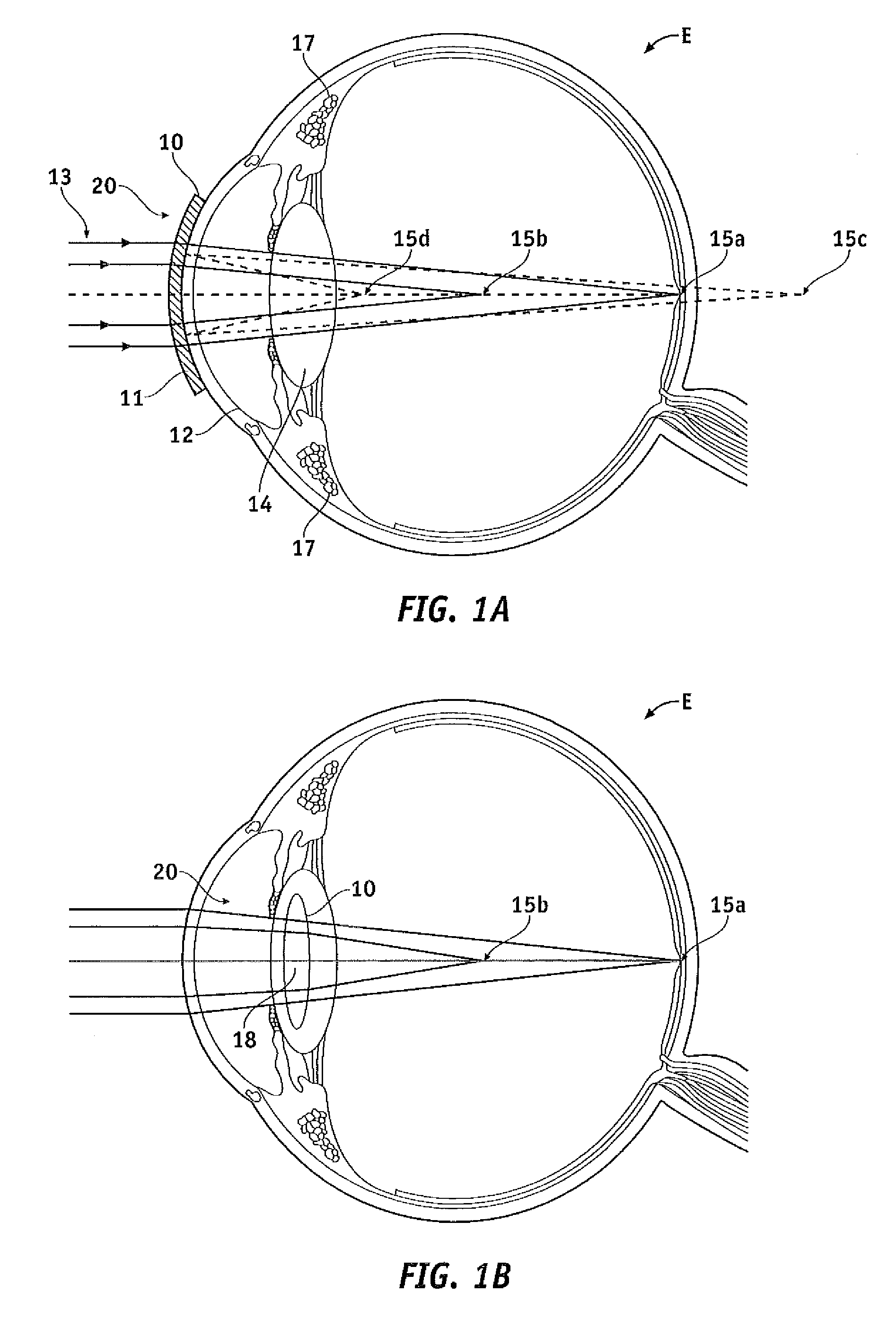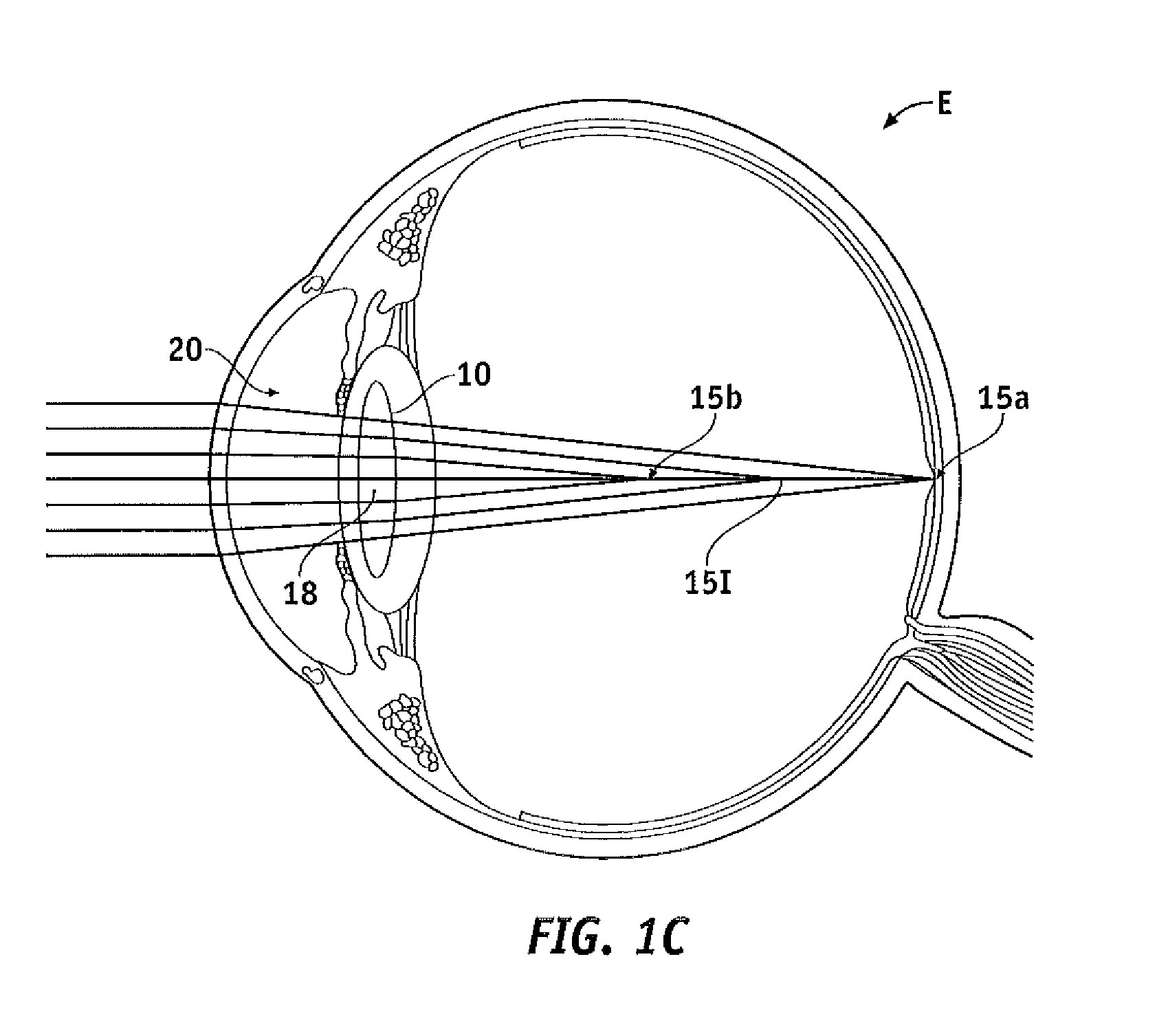Pupil dependent diffractive lens for near, intermediate, and far vision
a diffractive lens and pupil-dependent technology, applied in the field of multi-focal ophthalmic lenses, can solve the problems of affecting patient vision, affecting patient vision, and affecting patient comfort, so as to reduce chromatic aberration, improve patient comfort, and reduce light scattering
- Summary
- Abstract
- Description
- Claims
- Application Information
AI Technical Summary
Benefits of technology
Problems solved by technology
Method used
Image
Examples
Embodiment Construction
[0046]Embodiments of the present invention as described herein generally provide improved lenses and imaging systems. Although embodiments of the present invention may find their most immediate use may be in the form of improved ophthalmic devices, systems, and methods, the diffractive structures as described herein can be used with many optical systems such as imaging systems and viewing systems. Exemplary embodiments of the present invention provide improved ophthalmic lenses (including, for example contact lenses, intraocular lenses, corneal lenses, spectacle lenses, and combinations thereof and the like) and associated methods for their design and use. Embodiments of the present invention include multifocal diffractive lenses, such bifocal diffractive lenses with near vision correction and far vision correction, and trifocal diffractive lenses comprises near, intermediate and far vision correction, for example. Exemplary embodiments provide multifocal diffractive ophthalmic lens...
PUM
 Login to View More
Login to View More Abstract
Description
Claims
Application Information
 Login to View More
Login to View More - R&D
- Intellectual Property
- Life Sciences
- Materials
- Tech Scout
- Unparalleled Data Quality
- Higher Quality Content
- 60% Fewer Hallucinations
Browse by: Latest US Patents, China's latest patents, Technical Efficacy Thesaurus, Application Domain, Technology Topic, Popular Technical Reports.
© 2025 PatSnap. All rights reserved.Legal|Privacy policy|Modern Slavery Act Transparency Statement|Sitemap|About US| Contact US: help@patsnap.com



